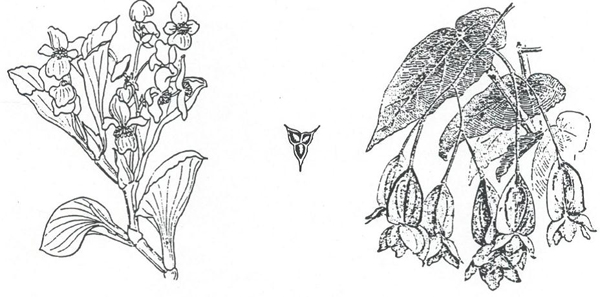Family Description
The Begoniaceae family consists of 3 genera and 1000 species of semi-succulent dicotyledonous perennial herbs with pantropic (distributed throughout the world in tropical regions) distribution. Plants are monoecious (having male and female flowers on the same plant but not in the same flower) with alternate, usually showy leaves that are asymmetrical at the base. The male flowers have two or three tepals (showy perianth units that can not be identified as either petals or sepals) and numerous yellow stamen. The ovary is inferior, triangular, prominently winged and 3-celled with numerous tiny ovules.- Key diagnostic characteristics of this easily recognized family include:
- asymmetrical leaf bases
- winged, triangular ovary of the female flowers
The begonias are popular houseplants, garden plants and flowering pot plants. They are of easy culture when grown in organic, fertile, well drained media and given regular watering. Propagation is accomplished by leaf or stem cuttings or by seeds which germinate best with temperatures above 70°F. Seedling growth is much faster under long day conditions. Pests are seldom serous.
All but 15 species of this family are in the genus Begonia. Hillebrandia and Symbegonia are not cultivated.

Begonia semperfloren (left) with male flowers, Begonia capsule in cross section (center), and B. coccinea (right) with female flowers.
Representative Species
click thumbnail to enlarge |
|||||||
| * | Begonia x hybrida | Angel Wing Dragon Wing |
|
||||
| * | Begonia semperflorens-cultorum | Wax Begonia |
|
||||
| Begonia x tuberhybrida | Tuberous Begonia |
|

